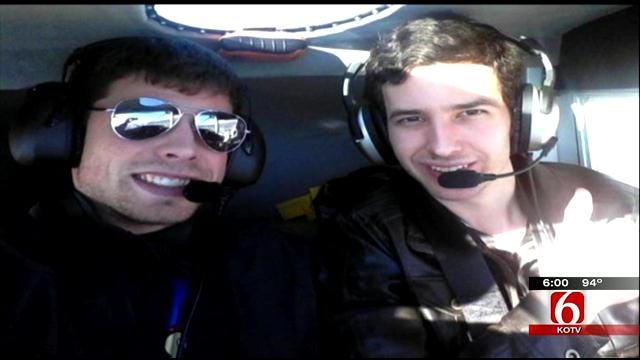NTSB: Cabin Heater To Blame For Kansas Plane Crash That Killed ORU Grads
The National Transportation Safety Board has released its final report on a plane crash near Chanute Kansas on May 11, 2012 that killed four people and injured a fifth. Friday, September 6th 2013, 11:17 am
The National Transportation Safety Board has released its final report on a plane crash near Chanute Kansas on May 11, 2012 that killed four people and injured a fifth.
The twin-engine Cessna 401 was on its way from Tulsa to Council Bluffs, Iowa for a religious conference when it crashed that afternoon.
The crash killed the pilot, Luke Sheets, 23, of Wisconsin; Stephen Luth, 22, of Iowa; Garrett Coble, 29, of Tulsa; and Austin Anderson, 27, of Enid.
Anderson, a former U.S. marine, pulled Hannah Luce, 22, of Texas, out of the wreckage, but later died of his injuries. Luce survived.
5/12/2012: Related Story: Kansas Plane Crash Claims Lives Of ORU Graduates, Former Teacher
The NTSB's Probable Cause report confirms what its investigators had been focusing on as the cause, the plane's cabin heater malfunctioned and caught fire.
According to the NTSB, the pilot turned on the cabin heater during the flight and he and the passengers noticed an unusual odor. The NTSB says when the pilot then turned off the heater dark smoke filled the cabin and was so thick it made it difficult to see.
The NTSB says the smoke likely interfered with Sheets' ability to find a place to make a safe emergency landing. A wingtip hit the ground causing the plane to cartwheel.
Inspecting the heater after the crash, investigators found several leaks around weld points on its combustion chamber.
According to the NTSB, the plane was equipped with a South Wind combustion heater which was last overhauled in 1994. It had been inspected on January 6, 2011, where it was listed as inoperative. According to the report, a mechanic found some problems with the heater on February 9, 2011 while trying to find out why it wouldn't work, but there was no indication that it was returned to service.
A flight instructor flew with the pilot on April 25, 2012 in a check ride required by the insurance company. He told the NTSB the heater's overheat light came on briefly when they turned the heater on, but the heater shut down automatically. Once they landed he showed the pilot how to reset the circuit breaker, which required getting out of the plane.
The NTSB says the flight instructor didn't follow up with the pilot about what was wrong with the heater. It could find no evidence that a mechanic had checked the heater before the accident flight.
Read the NTSB's Probable Cause report on the crash.
The NTSB says the probable cause of the crash was the malfunctioning heater, and contributing to it was the pilot's lack of understanding of the heater's status after a malfunction on an earlier flight. The NTSB says another contributing factor was inadequate guidance from the Federal Aviation Administration on what kind of inspections heaters should receive.
More Like This
September 6th, 2013
March 22nd, 2024
March 14th, 2024
February 9th, 2024













